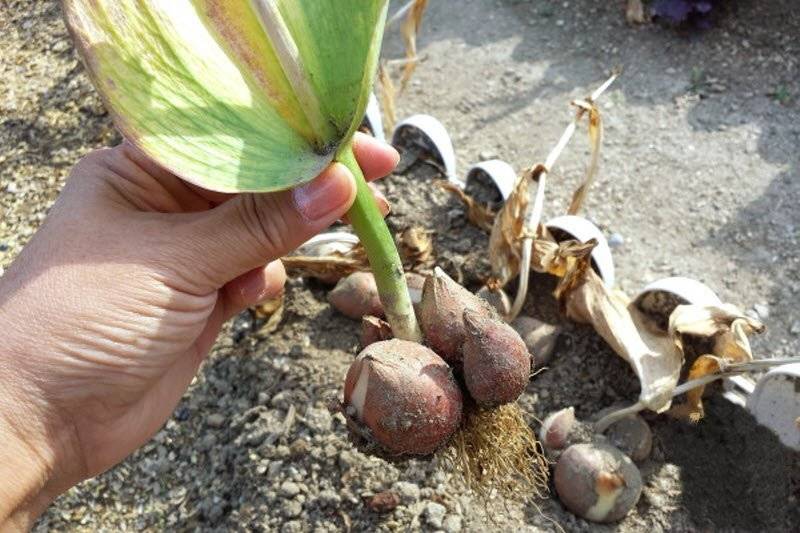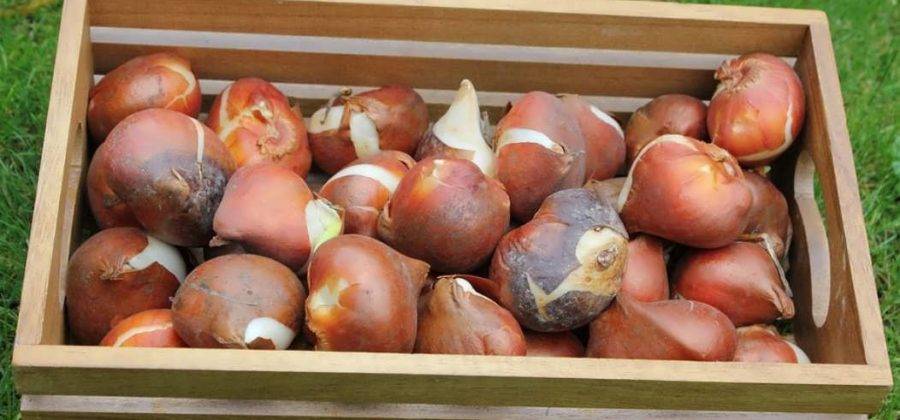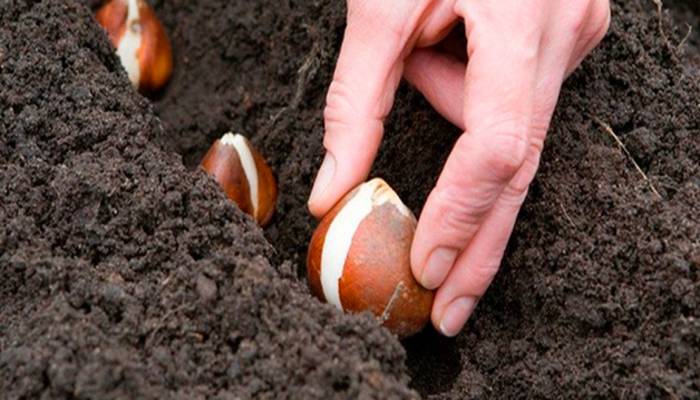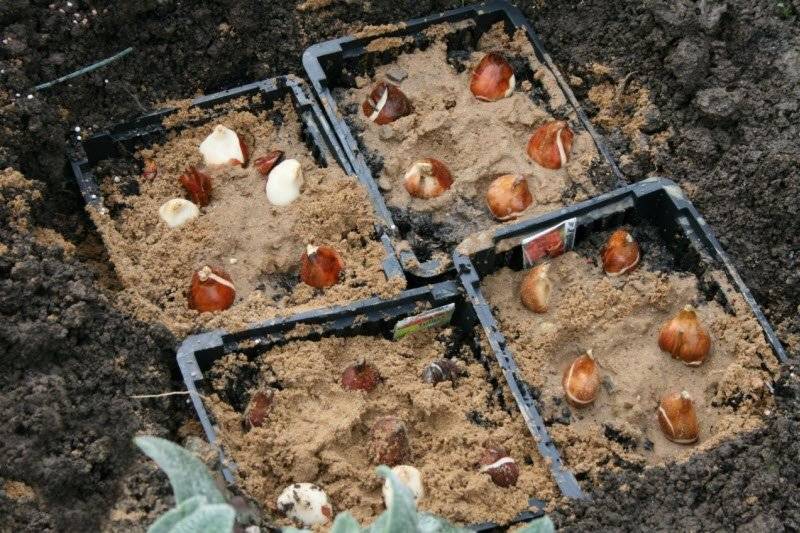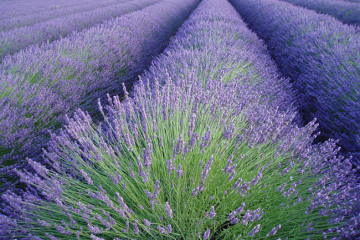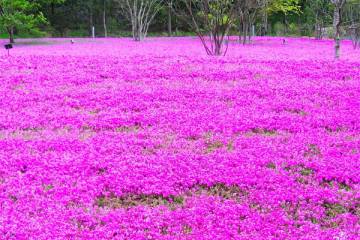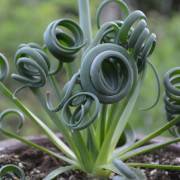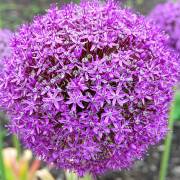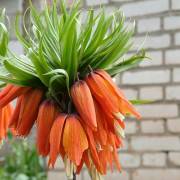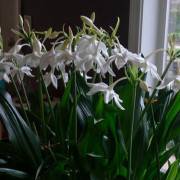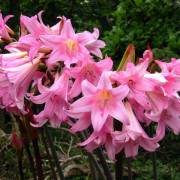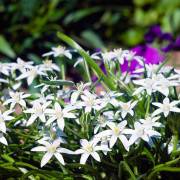When to dig tulips
Content:
When the tulips have faded, what to do next with them? It doesn't matter where the flower is grown - in the garden at home or in a public flowerbed - the rules for caring for it in the off-season are the same.
Tulip life
The growing season for a tulip is very short: by the middle of summer, the plant already loses its leaves. After the dying off of the aboveground part, the flower enters the stage of deep dormancy. But at this time, intra-onion development is actively going on: future shoots are laid in the underground parts.
A tulip forms new roots when the temperature of the soil becomes no more than 10 ° C, and its moisture increases due to a decrease in evaporation and frequent rains. Such conditions usually correspond to autumn. Once rooted, the plant hibernates, and in early spring, intensive growth of peduncles and leaves begins. The tulip blooms, and then the question arises of how to properly care for the tulips after flowering.
Why dig up tulips
Digging up is a very important condition for the successful cultivation of bulbs. There are several reasons for this:
- The peculiarity of the growth of the liliaceae family is that every year their bulbs "go" to ever greater depths. It becomes more difficult for children to break through the thickness of the earth. Seedlings become smaller and shorter. As a result, flowering stops completely, and then the plants disappear altogether.
- Varietal tulips degenerate without annual digging. For example, fringed, parrot, Dutch varieties become common red.
- The plant needs a dormant state in which a flower arrow is laid. The ideal temperature for this process is no less than 25 ° C and no more than 35 ° C. A strict temperature regime can be ensured only in storage.
- With prolonged cultivation of a flower in the same place, soil depletion occurs, and pathogens accumulate.
- Digging up the bulbs allows you to sort them by size and cull them. The large ones are then planted for flowering, and the small ones are planted separately and grown.
Do all tulips need to be dug every year
Most tulips need to be dug up and planted again annually, but there are varieties for which this procedure can be carried out only once every 3 years or even less often. These are Simple early and late, Triumph, Greig, Kaufman, Darwin hybrids, Foster.
If tulips are planted among perennial flowers, they also need not be dug up every season. In this case, you need to focus on the appearance of the flowers: if the plants bloom magnificently, do not get sick, then you can leave them in the ground for another season, and next spring you can re-evaluate the condition.
When to dig tulip bulbs
The leaves will tell you when to dig out tulips after flowering - they turn yellow. The stem becomes more sluggish and flexible - it will be difficult to rip it off. If you take a couple of bulbs out of the ground for control, you will see that they have formed brown scales. All these signs indicate that the underground part has matured and is ready for extraction.
You may not have to dig out the flowers at the same time, they do not always turn yellow all at once. It is not recommended to remove plants with still green leaves from the ground - the underground part has not yet had time to fully strengthen and form. But you should not postpone the procedure - if the stem and leaves of the plant are already dry, then the bulbous nest with the children has become too crumbly, and it will not be possible to remove all of its parts from the ground. This can lead to spontaneous proliferation of tulips. When left in the soil, weak onions often rot and sore and infect healthy plants.
Immediately after flowering, it is advisable to decapitate - break or cut the flower heads so that a seed capsule does not form. This will allow the plant to use all its strength to ripen the bulb and improve its quality.
Approximate dates for digging and planting tulips
| Region | Excavation period | Disembarkation time |
| Southern regions (Kuban, Kursk, Lipetsk, Voronezh regions) | mid-June - end of June | October |
| Ukraine | mid-June - end of June | October |
| Belarus, Moscow region, middle strip of Russia | end of June - mid july | after september 20 until October 15 |
| Northern Ural, Siberia | mid-July - early August | until the middle september |
What needs to be done before digging
Before extracting future planting material from the ground, it is recommended to feed the flowers with potassium-phosphorus fertilizer. Then the bulbs will be healthier and later will give more viable shoots.
How to choose a day to dig
The best time is after a few dry days. The soil will be easier to dig, and the bulbs will not require lengthy additional drying.
How and what to dig
It is best to use a pitchfork to retrieve tulips from the ground. When working with a shovel, the risk of damage to the seed is very high. The tool should be held vertically - this will reduce the likelihood of cutting off part of the onion. It is undesirable to pull the plants out of the ground by the stem - it can break off, and the underground part will remain in the soil.
How to prepare bulbs for storage
Immediately after digging, the remains of the stems are cut off, and the bulbs are harvested for drying for about 3-8 weeks. Then they are cleaned of soil, old roots, covering scales and sorted by size. The largest ones are left to get flowering plants. Small ones are planted separately to grow them to the desired size.
Special conditions must be created for storing planting material. The optimum will be an air temperature of about 20 ° C and a humidity of no more than 70%. The temperature is gradually lowered. By the time of landing, it should be no more than 10-13 ° С. Under such conditions, ripening is completed and the plants are hardened.
Planting tulips in open ground
When disembarking on the street, it also has its own characteristics and rules that must be followed.
When to plant
The most important prerequisite for planting tulips outdoors is temperature. 8-10 ° C are considered optimal for rooting. If it is warmer, the plant will not only take root, but will also give a flower arrow, which will freeze in winter. At lower temperatures, the tulip will not have time to root and may also die.
How to prepare the soil
Before planting flowers, the soil must be dug to a depth of at least 50 cm. The soil itself must be cultivated, light or medium in texture, with a neutral reaction. In clay and loamy soils, additional sand, peat and organic fertilizers are added. Tulips love watering, but the bulbs can rot from stagnant moisture, so there should be no close groundwater on the site.
It is advisable to transplant tulips to a new place annually, since the soil is depleted, and the bacteria from which the bulbous ones suffer accumulate. It will be possible to return tulips to their former site in 4-5 years.
How to plant
The depth of the hole in which the tulip will be planted depends on the size of the bulb. Usually, a hole is dug three times the diameter of the bulb, but not more than 15 centimeters. The distance between the holes is about 10 cm. It is advisable to pour a layer of sand on the bottom. If the weather is dry, then water should be done 10 days after planting.
Planting in a basket or closed container
Many growers prefer to grow bulb crops in containers. What is the difference between caring for tulips after flowering in the open field and in containers?
The latter option has a number of advantages:
- Flowers are much easier to dig up, there are no accidentally dropped children left in the ground, the bulbs are not damaged when removed from the ground.
- Plants are easier to protect from rodents.
- If the soil on the site is not suitable for growing bulbous plants, the correct soil conditions can be created in containers.
- It's easier to sort flowers by variety.
- Plants can be planted only when necessary when filling the soil, and not annually - flowers are sent "to rest" directly in containers.
- Digging out containers and replanting is possible even during flowering.
As soon as the tulips begin to bloom, they can be dug up and set aside, and other flowers can be transplanted in their place so that the flower bed does not lose its decorative appearance.
What can be used as containers
To plant flowers in this way, it is not necessary to use only special containers sold in stores. Other containers available at hand are quite suitable:
- cut pieces of large plastic bottles;
- cake packaging lids;
- old plastic pots;
- unnecessary buckets and bowls;
- vegetable boxes.
The main thing is to provide the plants with good drainage so that decay does not occur. For this, holes are made in the containers.
For planting in containers, they dig a hole corresponding to the size of the container, and dig it in so that the edge is at the level of the soil.
Botanists believe that the first tulips appeared 10-15 million years ago. Now it is one of the most popular inhabitants of flower beds, to which whole festivals are dedicated. It is not difficult to take care of it - it is only important to observe some conditions, and then the tulip will certainly become an adornment of any flower garden for many years.


